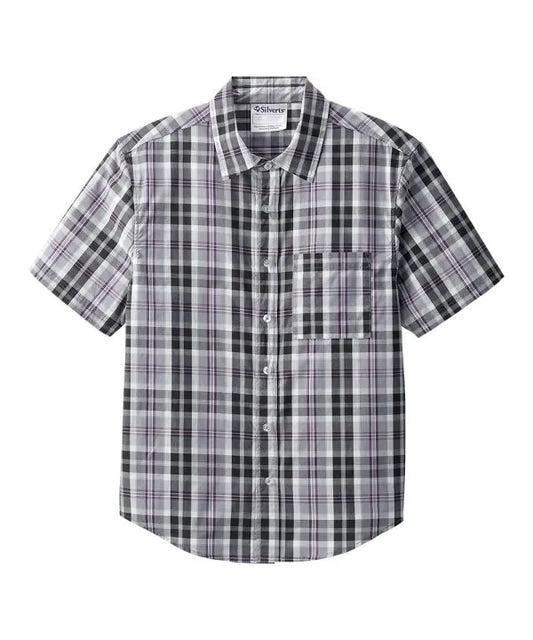Written by Ciera Mainville
In the 21st century, technology has transformed how people engage with the world, breaking barriers and creating opportunities for those who face challenges due to disabilities. Adaptive technology, a subset of innovative tools and designs, empowers individuals with disabilities to achieve greater independence, participate in society fully, and enhance their quality of life. As the demand for inclusion rises globally, adaptive technology evolves to meet the needs of diverse populations. This blog explores how adaptive technology empowers individuals with disabilities, highlights examples of such technology, and clarifies the distinction between adaptive and assistive devices, showcasing the immense potential these innovations hold.
How Can Technology Empower Persons with Disabilities
Technology serves as a powerful equalizer, enabling persons with disabilities to bridge gaps created by physical, sensory, or cognitive impairments. Adaptive devices and technologies are designed not merely to address limitations but to provide tools for independence, confidence, and autonomy. For many individuals, these innovations allow for seamless participation in work, education, and recreational activities.
For instance, mobility challenges no longer restrict movement when solutions such as lightweight, adaptive footwear like men’s cushioned shoes with rear zipper access come into play. Designed for easy wearability, such footwear eliminates the struggle of tying laces or maneuvering stiff designs, enabling users to maintain their mobility without discomfort. Beyond practical applications, innovations like these convey dignity and confidence by ensuring individuals can perform routine tasks with minimal assistance.
Moreover, adaptive technology plays a crucial role in fostering community engagement. Persons with disabilities often encounter social isolation due to barriers in accessing shared spaces or activities. Devices such as communication tools, screen readers, or adaptive clothing with magnetic fastenings allow them to participate comfortably and confidently, reducing reliance on caregivers or additional accommodations. These technologies transform societal participation from a privilege to a basic right.
How Do Adaptive Devices Benefit People with Disabilities?
Adaptive devices offer a spectrum of benefits that range from immediate functional assistance to long-term psychological empowerment. One of the most significant advantages is their ability to enhance independence. By reducing dependency on others, adaptive devices empower users to take control of their lives and make decisions based on personal preferences, not limitations.
Take clothing, for example. A self-dressing fleece cardigan with magnetic buttons can be a game-changer for individuals with limited dexterity or arthritis. Traditional buttons or zippers can be frustrating and time-consuming for someone with mobility challenges, but magnetic closures make dressing effortless and efficient. Beyond the convenience, such designs support self-expression and autonomy by allowing individuals to choose their outfits independently.
Another key benefit of adaptive devices is their role in improving physical and mental well-being. Devices that reduce physical strain, such as ergonomic keyboards or adaptive seating—help mitigate the discomfort or injuries that can arise from inaccessible environments. Similarly, technologies that promote interaction, such as adaptive video game controllers, allow individuals with disabilities to engage in leisure activities, reducing feelings of isolation and enhancing their overall quality of life.
Adaptive devices are not merely tools for accessibility, they are enablers of empowerment. They foster independence, boost confidence, and create opportunities for individuals to actively contribute to their communities.
What Are Examples of Adaptive Technology?
Adaptive technology spans various domains, addressing physical, sensory, and cognitive needs. These innovations are tailor-made to help individuals overcome specific challenges, ensuring they can engage with their environment effectively and independently.
1. Adaptive Mobility Solutions
Wheelchairs, motorized scooters, and exoskeletons are prominent examples of adaptive mobility solutions. They enable individuals with mobility impairments to move around freely and navigate spaces that might otherwise be inaccessible. However, adaptive innovations extend beyond traditional devices. Reversible vests with magnetic closures, for instance, simplify dressing for individuals with mobility challenges, ensuring comfort without sacrificing style.

2. Sensory Assistance Devices
For individuals with visual or auditory impairments, sensory assistance technologies provide critical support. Screen readers, such as JAWS (Job Access With Speech), convert text into speech for visually impaired users, allowing them to browse the internet, write documents, or read books. Hearing aids, cochlear implants, and visual alert systems serve as lifelines for those with auditory impairments. These devices are essential for communication and social interaction, ensuring users remain connected to the world around them.
3. Cognitive and Educational Aids
Adaptive technologies also cater to individuals with learning disabilities or cognitive impairments. Speech-generating devices (SGDs) help non-verbal individuals communicate effectively, while apps tailored for individuals with dyslexia offer tools for reading and writing assistance. These innovations ensure that learning remains accessible to all, regardless of cognitive differences.
4. Everyday Wearable Technology
Adaptive clothing, often overlooked in broader discussions of accessibility, plays a critical role in daily life. Items like magnetic-button fleece cardigans and rear-zippered cushioned shoes embody the fusion of fashion and function. Designed for practicality, these clothes allow individuals to dress and undress with ease, removing common barriers to personal care while fostering self-reliance.


5. Workplace and Recreational Tools
The workplace and recreational environments are critical areas where adaptive technology has made substantial impacts. Adjustable desks, specialized input devices such as mouth-operated joysticks, and captioning software enable individuals with disabilities to succeed professionally. Adaptive sports equipment, like handcycles or visually-guided bowling systems, ensures that recreational activities are inclusive and accessible.
Each of these examples demonstrates how adaptive technology addresses specific challenges, providing customized solutions that empower individuals and integrate them into broader social, educational, and professional contexts.
What Is the Difference Between Assistive Devices and Adaptive Devices?
While the terms "assistive" and "adaptive" are often used interchangeably, they represent distinct categories of technological innovation. Both are essential in supporting persons with disabilities, yet their purposes and applications differ in subtle but significant ways.
Assistive devices are primarily designed to aid individuals in performing tasks they might otherwise find challenging due to their disability. These devices are often generic, serving a broad range of users without substantial modification. For example, a hearing aid amplifies sound for individuals with hearing loss, and a cane provides balance for those with mobility impairments.
Adaptive devices, on the other hand, are customized tools specifically modified to meet the unique needs of an individual or a particular disability. These devices focus on adapting existing technologies or creating entirely new ones to accommodate specific challenges. For instance, adaptive keyboards with larger keys or alternative layouts enable individuals with limited hand mobility to type effectively. Similarly, the reversible vest with magnetic closures is a customized clothing solution designed for users who face difficulties with traditional fasteners.
The primary difference lies in the level of customization. While assistive devices provide general support, adaptive devices are tailored to the user's specific needs, offering a more personalized solution. Both categories are vital, often working together to create an inclusive environment where individuals with disabilities can thrive.
The Role of Inclusive Design in Everyday Life
One of the most significant shifts in recent years is the emphasis on inclusive design—a philosophy that integrates accessibility and usability into the development of products from the outset. Inclusive design ensures that innovations cater to the widest possible audience, minimizing the need for subsequent adaptations.
The evolution of adaptive clothing exemplifies the impact of inclusive design. Brands like June Adaptive prioritize functionality and aesthetics, creating pieces such as magnetic button cardigans that cater to the needs of individuals with disabilities while maintaining style and comfort. These designs promote inclusion not by isolating users with disabilities but by integrating their needs into mainstream fashion.
Beyond clothing, inclusive design extends to public infrastructure, technology interfaces, and product packaging, ensuring accessibility is no longer an afterthought but a core consideration in innovation.
Conclusion
Adaptive technology and devices have revolutionized the way individuals with disabilities interact with their environments, offering tools that empower independence, foster inclusion, and enhance quality of life. From mobility aids to sensory assistance and adaptive clothing, these innovations bridge gaps and create opportunities for individuals to participate fully in their communities.
However, the journey toward accessibility is ongoing. By embracing inclusive design principles and fostering awareness about the unique challenges faced by persons with disabilities, society can continue to break barriers and create a world where everyone has the tools to thrive.
Through the adoption of adaptive technologies like rear-zippered cushioned shoes, magnetic cardigans, and reversible vests, society demonstrates a growing commitment to blending innovation with empathy. These tools are not merely functional; they represent dignity, self-expression, and the human right to live independently. True inclusion requires collaboration between designers, policymakers, and communities to ensure adaptive technologies remain accessible and affordable for all.
By prioritizing these advancements, we not only meet the immediate needs of individuals with disabilities but also pave the way for a more equitable future. Technology has the power to dismantle barriers, but it also demands continuous refinement and innovation to stay ahead of evolving challenges. An inclusive world benefits everyone, as it fosters greater understanding, appreciation for diversity, and shared progress. Every step taken in developing and promoting adaptive technologies is a step toward empowering millions of people and ensuring their rightful place in a society that values all its members equally.















